Weekly round-up: 25 Nov - 01 Dec
Another week, another band of pretty wild weather.
The surge of westerly or southwest winds seemed relentless once again as gales, heavy rain and, across Scotland, some fairly hefty snow left their marks as the rough stuff didn’t seem to be in any sort of a hurry to let up just yet.
There were a few calmer moments to be had, a slightly more peaceful 1st day of December saw in the new month, it felt slightly milder outside the door here for starters, but overall it was a week of rather unpleasant conditions as Storm Clodagh brought winds in excess of 70mph along with all that precipitation.
Temperatures were all over the shop - from the balmy 13’s and 14’s of the southeast to chilly just above freezing in northern England (colder still in Scotland) and the best birds of the week were also pretty well all over the shop too…
...getting the ball rolling, the double delight offered up at the very start of the new review week…
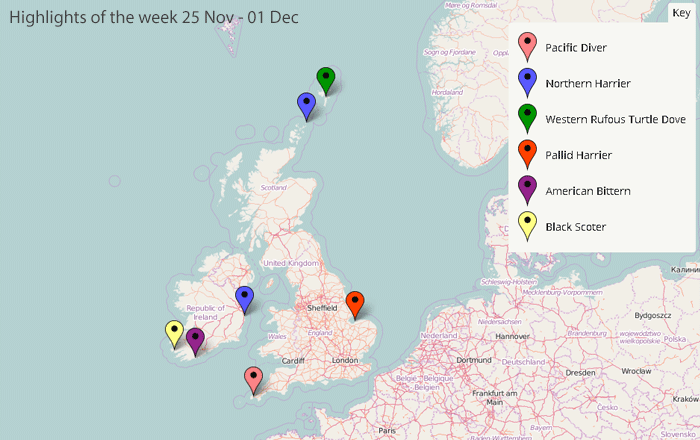
It is really quite something to see a double mega alert day anywhere outside of the absolute heights of spring or autumn - and even then, they don’t come along that often. To get a double mega alert day towards the back end of November is really quite something - and what a couple of truly thrilling species were thrown out in to the headlines.
Rarest of the two offerings given to us by the Birding Gods on a busy, busy 25th made itself known to the outside world sometime around the time some professional chefs were having some professional sized meltdowns on BBC2 - arguably far more interesting than a failed, floppy pancetta foam was the startling news declaring that there was a Rufous Turtle Dove in a garden at Scalloway, on the Shetland Mainland.
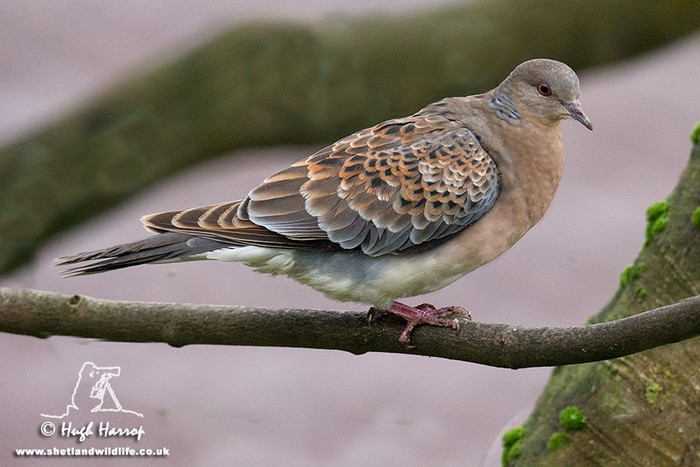
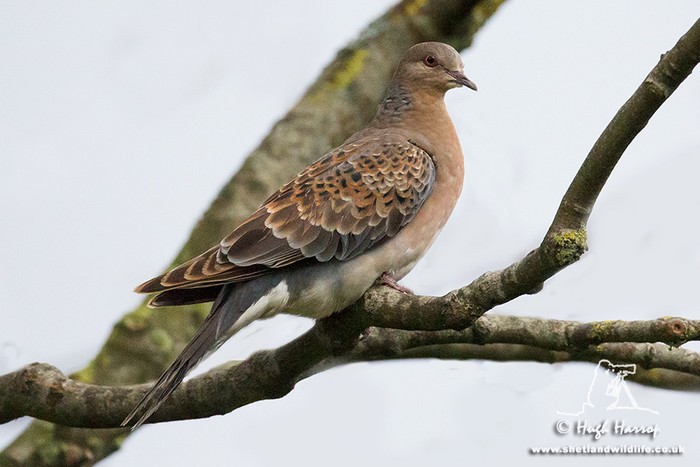
Wow. What a very cool bird…
It wasn’t too long ago that the archives were raided for Jack Levene’s funky shot of the most recent example (and a twitched one at that) of this western form - meena - of Oriental Turtle Dove and mention was made of the 12 years that had elapsed since then. Now, as if by magic, here was another, strutting around a Scalloway garden for an hour or so during the afternoon - with further viewings coming along throughout 26th right up until the 1st of the new month too - a massive Shetland tick for the adopted local listers dotted around the islands - only the second record for the archipelago and the first example of the western Rufous Turtle Dove.
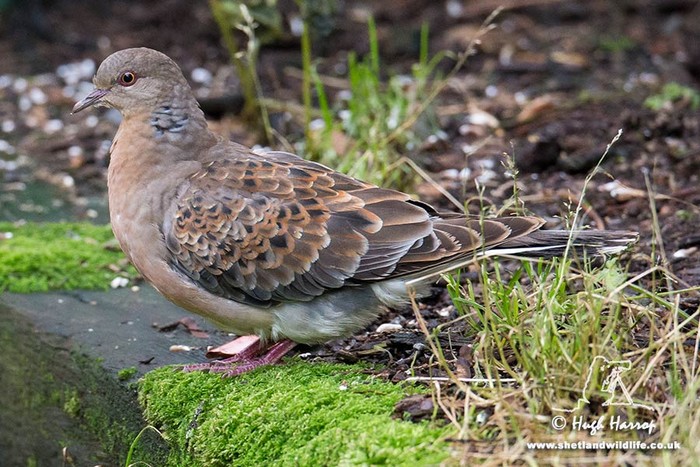
The sole Shetland record to date was of an orientalis Oriental Turtle Dove that spent two days on Fair Isle on October 31st-November 1st 1974.
Overall, there’ve been 13 accepted records of the species (both forms included, no sign of a split any time soon - barely anyone, anywhere regards the two forms as anything other than distinct sub-species) and they break down as follows…
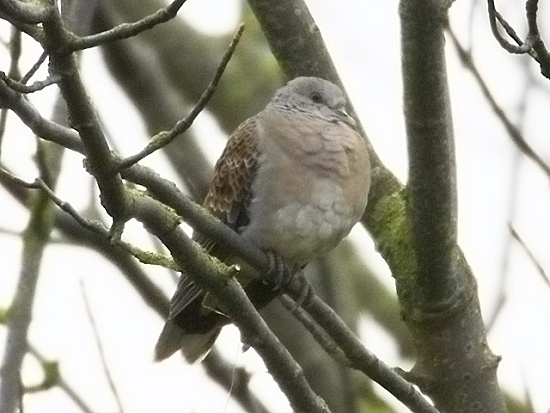
Rufous Turtle Dove - form meena
- Spurn, East Yorkshire - juvenile, November 8th 1975
- Stromness, Orkney - juvenile-1w, November 20th-December 20th 2002
- Hill of Ratar, Highland - juvenile-1w, December 5th 2003-March 24th 2004
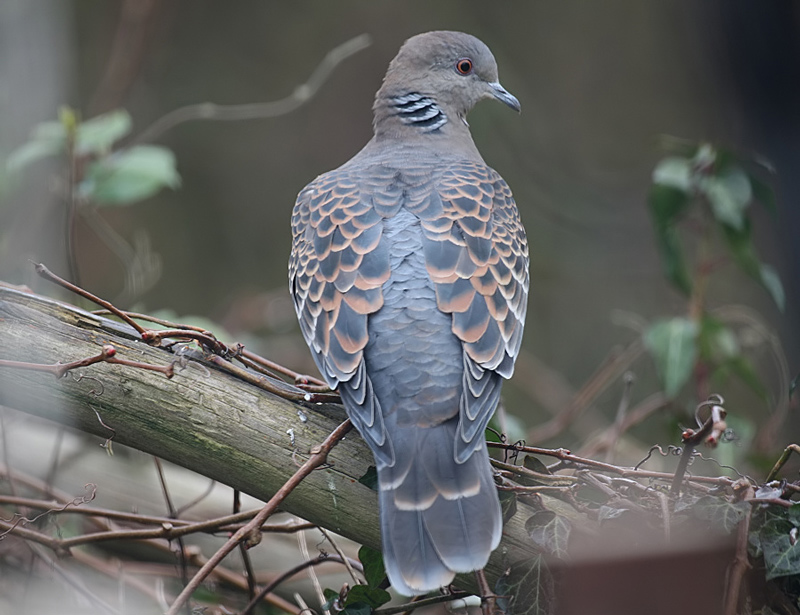
Oriental Turtle Dove - form orientalis
- Scarborough, North Yorkshire - immature, shot, October 23rd 1889
- Castle Rising, Norfolk - female, shot, January 29th 1946
- Fair Isle, Shetland - juvenile, October 31st-November 1st 1974
- Chipping Norton, Oxfordshire - juvenile-1s, December 15th 2010-May 9th 2011
”Oriental Turtle Dove” - form unknown
- St. Agnes, Scilly - May 2nd-3rd 1960 (and again on 6th)
- Portmahomack Bay, Highland - juvenile-1w, November 9th 2002
- Barsham, Suffolk - 1w, April 13th-15th 2011
- Hickling, Norfolk - 1w, March 19th 2012
Given the 1000’s of people who availed themselves of the Chipping Norton orientalis just a handful of years ago, there’s was little interest from too far a field (which seems like such a shame, but it just goes that way sometimes) - just a tiny handful of brave souls headed north over the weekend - at least now they have a suitable insurance policy marked meena now, just in case…
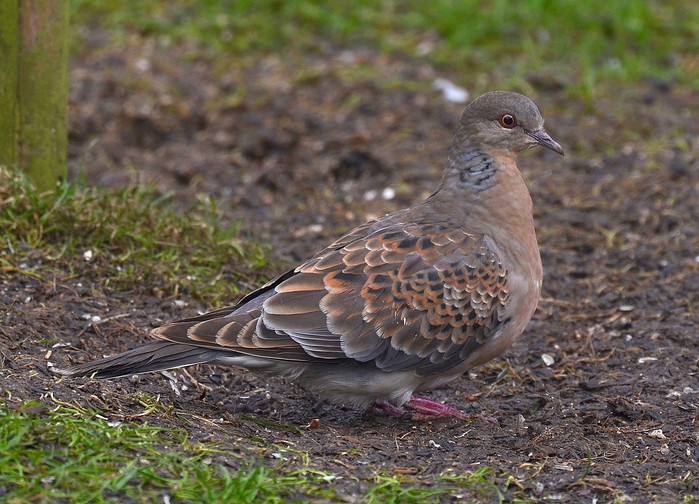
If you didn’t see the Orkney or Highland birds in ’02 or ’03, then this bird was a must…but with so little intent in the splitting world to go near this anytime soon (remember too that the BOU-TSC has been dissolved as well now) then there seems to be little reason for those with an Oriental Turtle Dove on their list to invest the money in a Rufous Turtle Dove.
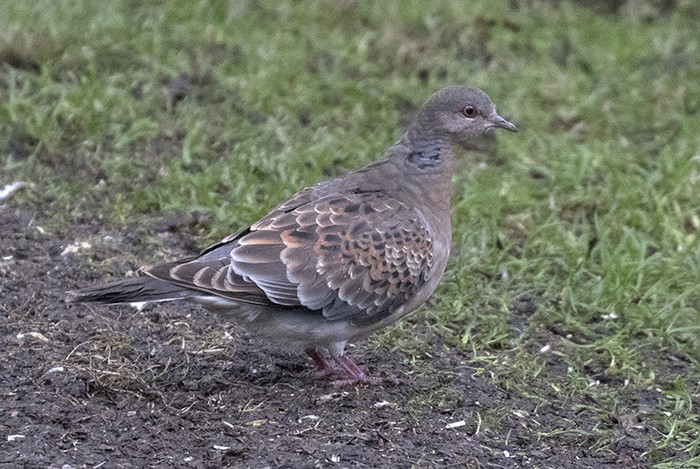
It actually doesn’t matter at all as to the “who does what” with this bird - it is a scintillating discovery and just because no one pays £450 to go and see the beastie shouldn’t make it a “lesser rarity” - it isn’t, it’s an absolute cracker.
Earlier in the afternoon of 25th, another “oooo, that’s nice” Mega Alert sounded news of a bird coming from a wholly different compass point compared to that of the Shetland dove. Cork had itself an American Bittern, presenting a wonderful juxtaposition of two rarities that couldn’t be more different if they tried…
Funnily enough, at the end of last week’s round-up, the suggestion was writ-large that for “new blood” we’d have to look towards the west and something new making a path across the Atlantic... (half right at any rate)…
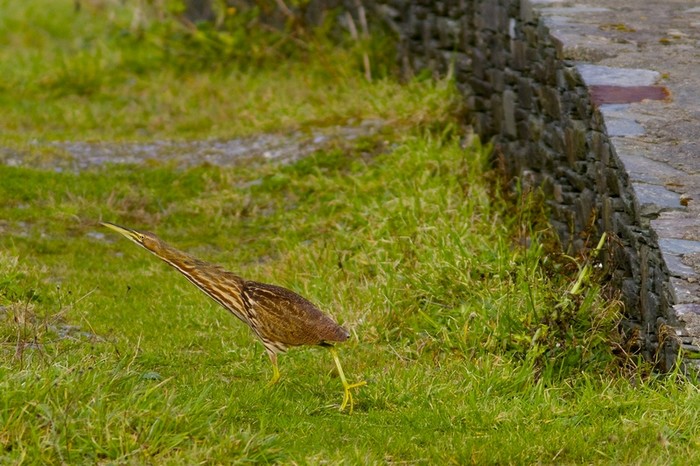
…and almost as soon as the review had been hauled up the flagpole online then there it was - some particularly impressive Nearctic “new blood” discovered in southwest Ireland. Not in the form of the big-prediction (which was Green Heron)…but in the same ball park - and a species that had even got a head’s up in to the bargain…
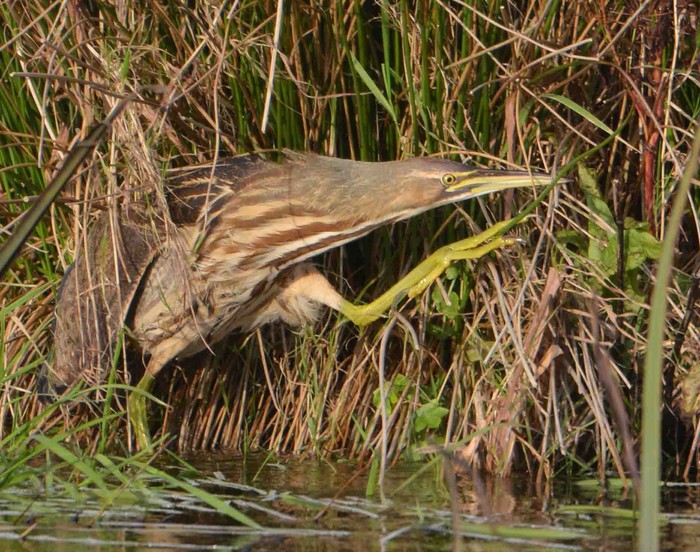
Such self-congratulatory twaddle can be cast aside immediately (“hooray” they cry) and the real congratulations wing their way to Lynne and Ted de Beer who found the bird, a really super-showy American Bittern along the small lake that lies below Castlefreke House, just to the east of Owenahincha, in County Cork, during the late morning of 25th.
American Bittern Castlefreke, Co. Cork, Ireland. 26 November 2015. from Aidan G. Kelly.
They were sure the bird was a “bittern” and called local help in the form of Pete Wolstenholme who was at nearby Galley Head. An hour or so after arriving, he too had seen the bird, clearly it was a bittern…and soon some striking chestnut neck stripes were duly noted - and then, a little while later, the bird performed in the open for 90 minutes or more; the ID was a done deal - this was an American Bittern and it instantly became the 1st twitchable record for the country (eminent Irish twitchers appearing on site soon afterwards to enjoy a grand new bird).
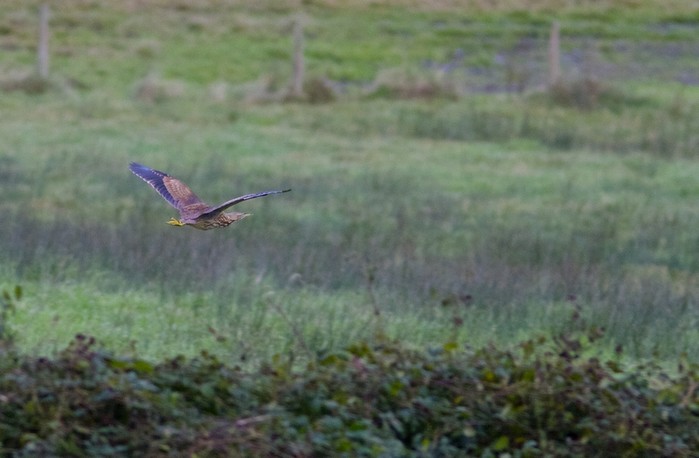
For those Irish listers that couldn’t make it to Cork during the afternoon of 25th, there was no need to worry - the bird looked settled in a nice looking area of habitat and was performing, often extremely well through Day 2 on 26th and until late morning on 27th. The wind got up and blew and blew and there was no further sign across the rest of 27th and not a single mention on 28th either. The script wasn’t meant to read quite like this.
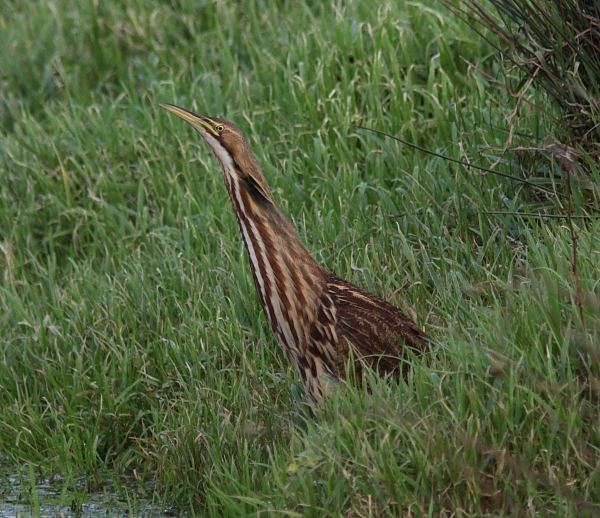
American Bittern has been recorded in 14 Irish counties, with a total of 22 birds in all noted from Derry and Donegal to Kerry and Cork, with a fair scattering down the eastern side of the country. From those 22 records, there have been only three in the past 45 years - a moribund juvenile was found at Malahide (Co. Dublin) in early October 1970; another sickly individual was located at Mailn Beg (Co. Donegal) in the third week of October 1973 (it too succumbed later) with Ireland’s most recent record being of a bird that fell victim to a do at Killag, in Wexford on January 21st 1990.
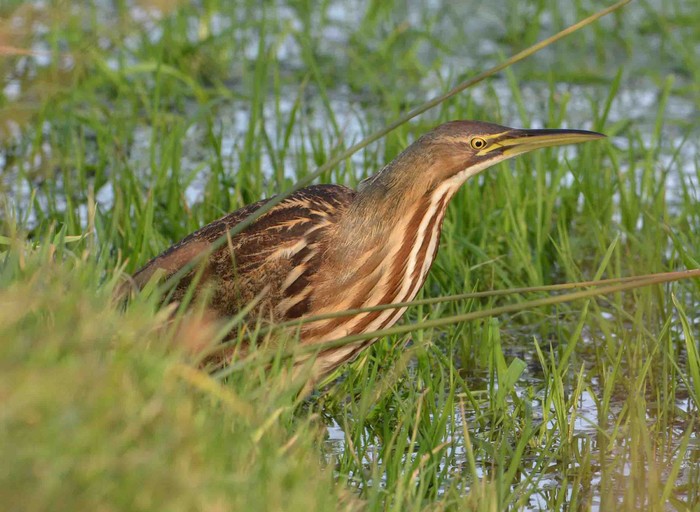
Cork now has four American Bitterns on the county’s list of avifauna thanks to this week’s gem at Castlefreke - all three previous records came 140 years ago, in a crazy run of three birds around Cork within the last three months of 1875 (“obtained” at Glandore in October, shot at Annagh Bay on November 25th and “obtained” - again - between Youghal and Cork on December 1st).
Opportunities to engage with this fabulous Transatlantic visitor have been few and far between in Britain too - only three American Bitterns really stick in the mind for the past three and a bit decades of twitching history; the famous bird at Magor, in Gwent, that spent over two months on site in the last autumn of 1981 (into early January ’82), the much-appreciated adult at Marton Mere, in Lancashire from January to May 1991 and, most recently, in west and then north Cornwall, at Trewey Common and the Walmsley Sanctuary between October 26th & November 6th 2010 (the latter the site of a suppressed five-dayer in May 1999).
Another big Irish bird this week, though one that has already bathed in untold amounts of listing delight is the returned drake Black Scoter on the far west side of the country, in Kerry.
Earlier in the autumn, he’d returned to his favoured sea area of last winter, at Rossbeigh, where he was logged on at least four occasions between October 10th-30th (having appeared in early January and staying in to very early April). Then, there was nothing…
…nothing until this week’s reappearance some 35 to 40 miles to the south of the Rossbeigh Strand, on the sea at Waterville on the afternoon of 26th (it is, of course, a presumed reappearance, there’s a chance it could be a new Black Scoter but it feels unlikely at the moment despite the American slant to the weather of late. The Scoter showed on 27th too.
That ole black ducky has quite some way to go to be in the same league for comebacks as the Mount’s Bay Pacific Diver - they do share the same date sightings-wise this week though, as the PD emerged in MB on the afternoon of 26th too.
This winter’s return date is four days later than 2014’s - and the bird didn’t depart until perhaps as late as very early May this year. Assuming the Pacific Diver sticks around (even loosely) in the area through until February 2016, that will see the bird chalk up a ninth year in Cornish waters since being found on February 17th 2007 (2008 was a blank, so it’s sort of eight, but you get the general picture).
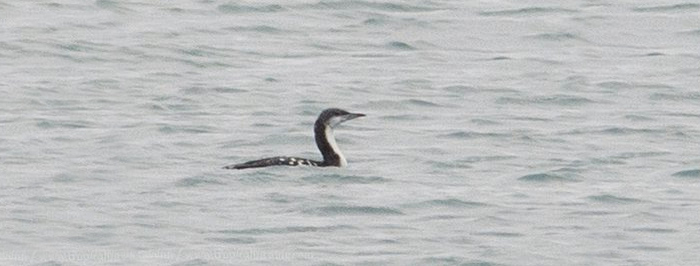
At some stage the question as to whether two could be involved will loom again - there’s a Pacific Diver that likes to hang out further along the Cornish south coast - but maybe it is just one-in-the-same after all. Either way, it is a wonderful bird to have in place for another few months - one of no more than six ever seen here since that amazing run in January and February 2007 started the ball rolling.
The Pacific Diver was seen a couple of times through until the end of the weekend, once off Marazion and then off nearby Newlyn and again on both 30th and 1st.
We’re shaping up for a couple of very fine wintering birds with the two species above - is there a chance the next one may do something similar?
Most of the remaining birds this week look almost a little underwhelming off the back of the double-whammy given to us on 25th - but, as ever, there were great birds still up for grabs elsewhere, none more so than the juvenile Pallid Harrier that remained at the southern end of the Snettisham RSPB reserve in the far west of Norfolk through until 1st.
It still seems weird that the bird thought a cert to be a winter shoe-in at Warham did a bunk (present for only two days as it turns out) but the Snettisham bird (which does now appear to be the Warham bird after all - long story…) perhaps shows more promise in lingering for a decent length of time, still present to 26th (10 days an counting). With good feeding habitat and a favourable roost nearby, this could be a staple of the winter ahead…
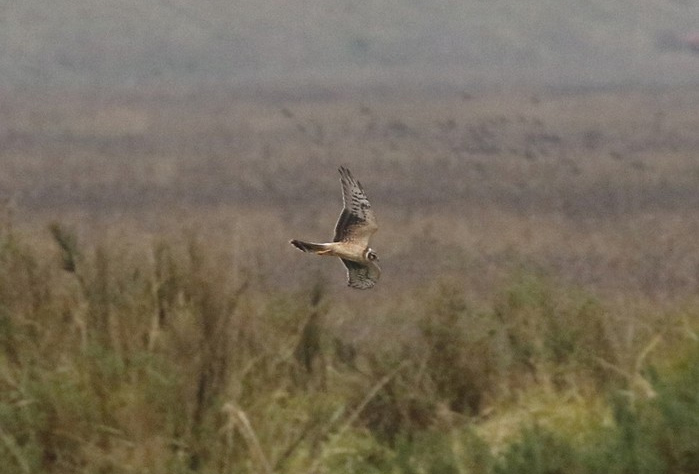
…and, before moving any further - hats off to November 26th - what a rare-filled day eh?…
- Rufous Turtle Dove
- American Bittern
- Black Scoter
- Pacific Diver
- Pallid Harrier
That’s a hefty quintet of quality. Some birders today don’t know how lucky they are. Holy moly…
One of the autumn’s most underrated birds, the male Northern Harrier remained up on North Ronaldsay through until 30th at least - having clocked up two months in and around Orkney.
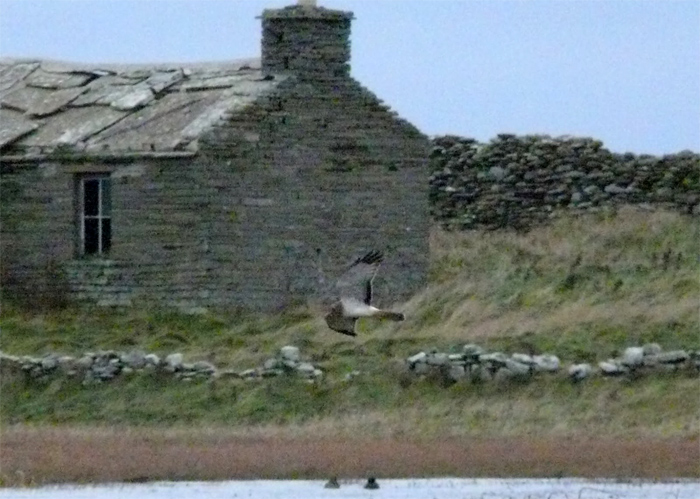
Over in Ireland, at Newcastle (Co. Wicklow) the presumed juvenile male Northern Harrier appeared again on 29th and 1st, still proving elusive but at least the bird is still around in the general area...
Although the weather didn’t really settle down - the weekend in particular was very windy - the direction had shifted back to the milder (sort of) west and southwest and, as a consequence, seabird numbers dropped away after last week’s sub-Arctic blast.
Little Auk numbers inevitably fell away, a total of less than were 200 recorded across 13 counties in Britain and Ireland through the week. The highest count came from Barns Ness (Lothian) - 93 passing by on 25th, with 20 from Girdle Ness (Aberdeenshire) and 12 at Symbister, Whalsay (Shetland) on 28th with 11 from Flamborough Head (East Yorkshire) on 25th being the only other double figure counts from the past seven days.
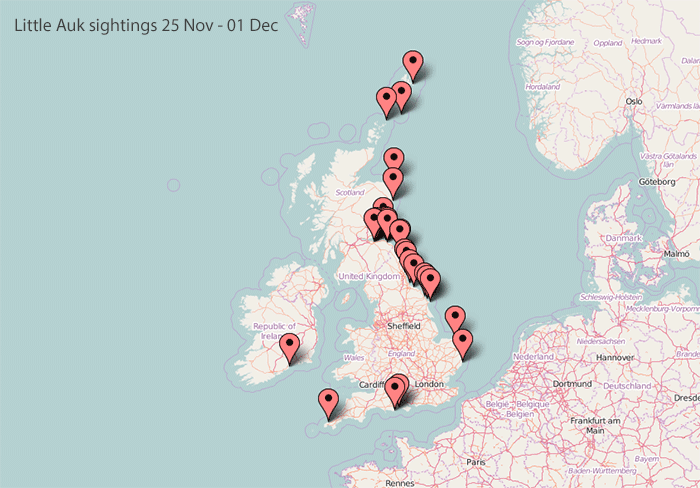
Nine birds were reported off the Suffolk coast, at Thorpeness, on 27th and singles were spread from Fair Isle to St. Ives with one also appearing at Helvick Head (Co. Waterford) on 28th while in Dorset, four Little Auks were mentioned for Durlston CP on 25th and another was at Hengistbury Head on 28th.
The Celtic west coast hosted three single Leach’s Storm-petrels during 27th - the first flew past Troon harbour (Ayrshire), the second of the day was seen at Porthcawl (Glamorgan) and number three passed Bridges of Ross (Co. Clare). A fourth for the week flew past Rubha Ardvule, South Uist (Outer Hebrides) on 29th.
Back to Suffolk, where a very late juvenile Long-tailed Skua was reported from Thorpeness on 25th with 10 Pomarine Skuas seen on the same seawatch. Elsewhere in East Anglia on the same day, two Poms flew over the northern edge of Wells and a further single was seen at Dungeness.
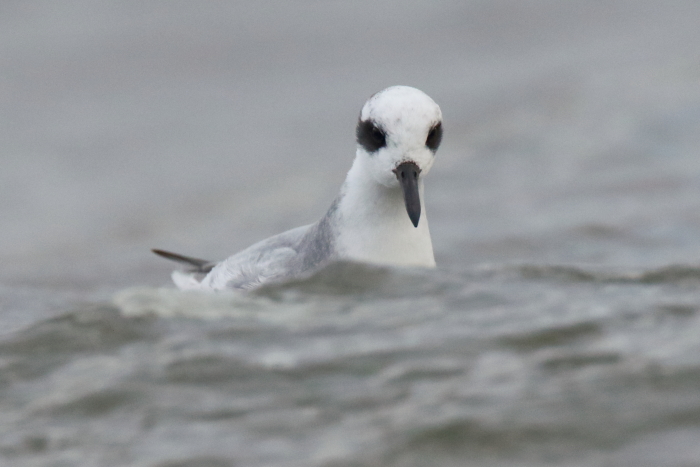
The following four days saw small numbers of Pomarine Skuas pass Thorpeness - five on 26th, two on 27th, one on 28th and four on 29th - with further singles spread from Cornwall, Dorset and Somerset to Hampshire and Gloucestershire, Glamorgan, Gwent, the Wirral and County Durham across 27th-30th, with December 1st records coming from Minsmere RSPB in Suffolk and Severn Beach (Gloucestershire).
Just one Sabine’s Gull was noted, seen at the start of the week at Bloody Foreland (Co. Donegal) on 25th while lingering storm-driven Grey Phalaropes from last week remained at Irvine (Ayrshire) until 1st and inland, at Farmoor Reservoir (Oxfordshire) until 30th when, amazingly, it was joined by a second individual, both of which were in place on 1st as well. New birds headed past St. Ives Island (Cornwall) on 25th, another appeared at Langstone Harbour (Hampshire) on 28th and singles were seen at Newtonlynch (Co. Galway) and just in to Clare, at New Quay on 29th.
Finally, a lone Balearic Shearwater flew past Flamborough Head on 29th, three were seen from Porthgwarra (Cornwall) on the same date and one was seen from Whitburn (Co. Durham) on 30th.
A new Glossy Ibis was found on pools at Pett Level (East Sussex) on 26th, it stayed through until 28th - the first in the county for 18 months or so. In Waterford, at Tramore Backstrand, a Glossy Ibis was noted again on 25th (presumably the same bird was last noted there on October 10th) while the third of the week remained around Shapwick Heath NNR and Ham Wall RSPB (Somerset) until 26th.
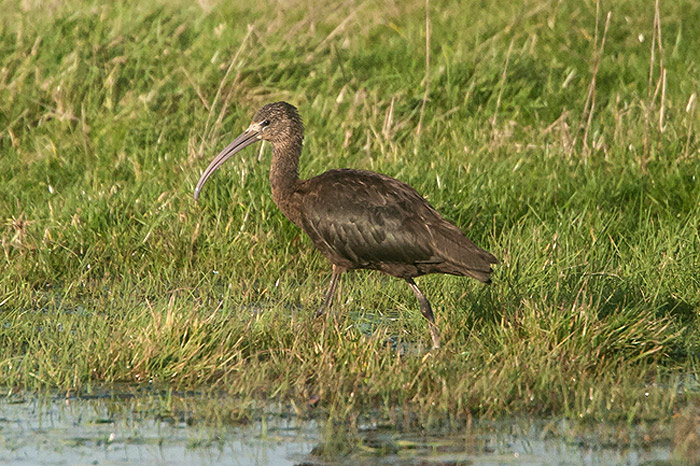
The same area around the Avalon Marshes continued to host a Cattle Egret to 25th and the long-stayer at Tacumshin remained in Wexford to 26th at least. A new bird was reported in north Norfolk, heading north over Sharrington on 28th while appearing for the first time in over three weeks was a Cattle Egret at Steart WWT (Somerset) - last noted there on November 7th.
At least 20 Spoonbills were seen on the Studland side of Poole Harbour on 26th and then 30 were seen on the Arne side on 1st. Across in Ireland, five were now at Dungarvan (Co. Waterford) from 26th-27th. In west Cornwall, the two birds remained on the Hayle Estuary (Cornwall) to 29th while singles were noted in East Anglia at Titchwell RSPB and nearby Thornham, along with another still at Snettisham RSPB on 25th-26th and in Suffolk, at Hazelwood Common on 28th.
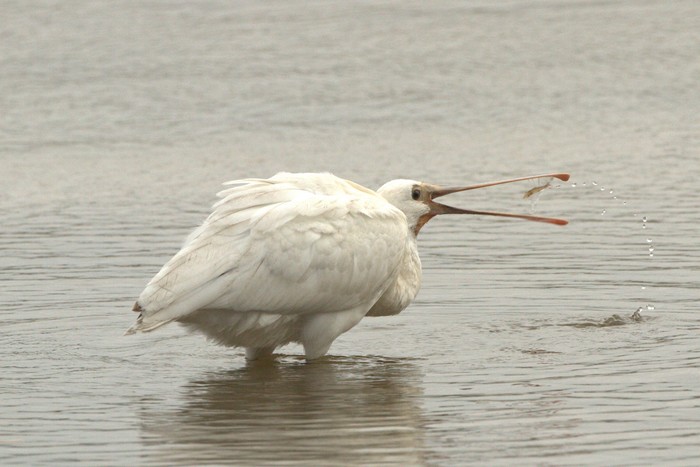
This has been yet another quiet week for reports of Common Cranes the only ones noted through the last seven days were four again at Acle (Norfolk) on 29th and 14 on the Ouse Washes (Cambridgeshire) on 1st.
After the fascinating news of a flock of half a dozen Snow Geese in Glamorgan last week, equally interesting was the appearance of four Lesser Snow Goose, a blue or intermediate adult and three juveniles in the roost on Loch of Skene (Aberdeenshire) on 28th. A single Snow was in Highland, at Balintore on 29th-1st.
Sligo goose watchers noted the continuing presence, at Lissadell, of the Todd’s Canada Goose on 1st; what’s happening with the Islay hutchinsii I wonder?
Three Black Brants were noted around a moderately small area of north Norfolk on 28th - two birds were amongst a flock of c.800 Dark-bellied birds in winter wheat fields near Binham (one of them being the magnificent returning, tho’ often elusive, gander) while nearby at Cley, the wintering adult was noted along the Beach Road.
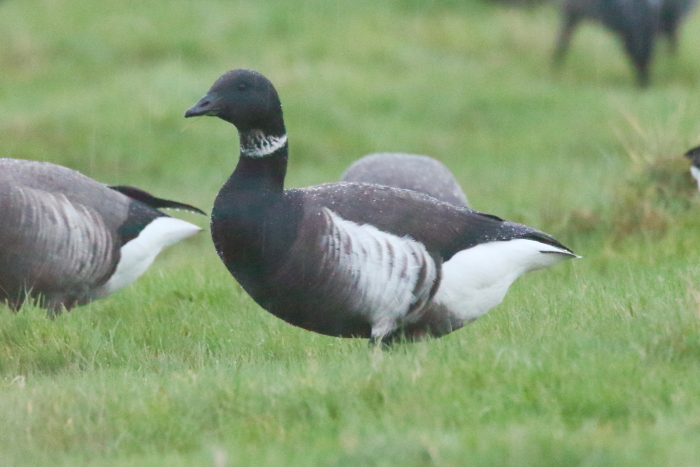
Further Brants this week were again at Kilnsesa (East Yorkshire) on 25th, around the Exe Estuary (Devon) to 29th and in Dorset, on The Fleet, at Wyke Regis and in Kerry, at Castlegregory both on 30th.
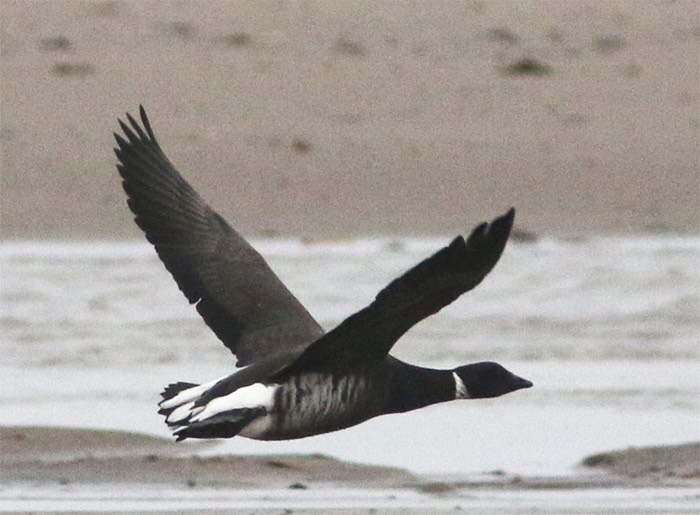
Kerry’s double dose of Lesser Scaups - a first-winter drake and the adult drake - remained on Lough Gill until 30th and the regular drake was still at Chew Valley Lake (Somerset) through to 28th. New was an adult drake at Loch Leven (Perth & Kinross) on 25th - the last accepted record for the county was a drake at the same site in 2009 but there have been subsequent reports (including two in June 2010) since, but none have appeared in print.
The two female Ring-necked Ducks found last week in Hampshire were finding the waters of Rooksbury Mill LNR, near Andover very much to their liking, staying on site until 1st. Back in Perth & Kinross, the drake Ring-necked Duck was at Pitlochry until 25th at least, with further Scottish drakes noted as still present at Loch of Skaill, Mainland (Orkney) to 28th and Caerlaverock WWT (Dumfries & Galloway) through to 1st. The only Irish bird this week was at Lough Gara, Inchmore (Co. Sligo) on 30th.
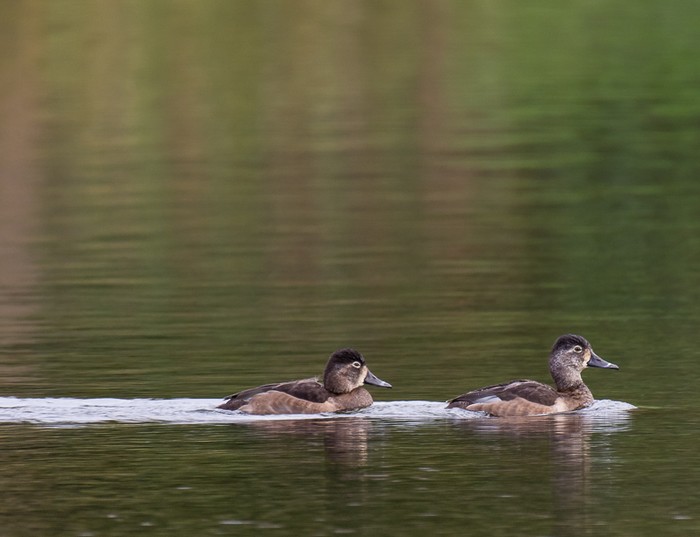
In Ireland, the female Ring-necked Duck remained at the North Slob NNR (Co. Wexford) until 26th while a returning bird (though he wasn’t around for long) was the drake at Bray GPs (Berkshire) on 25th - he was noted here from last December to February this year.
The female Ferruginous Duck on the outer limits of Greater London was noted again on Dagenham Chase LNR on 29th-30th (the last sighting noted for this particular bird was 23rd) while the male was back at Blashford Lakes HWT (Hampshire) on 30th (he’s not been reported since 22nd).
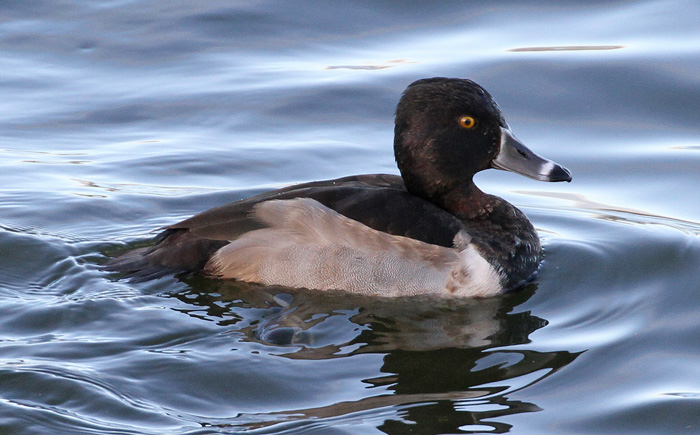
After almost a month with no reports, the drake American Wigeon was seen again at Loch of Strathbeg RSPB (Aberdeenshire) on 25th and new drakes in Highland were at Tain and Udale Bay, both on 30th. The seven drake Green-winged Teals were split 2:5 between the far southwest and Scotland. Cornwall’s bird remained at the Walmsley Sanctuary to 25th and in Devon, one was at Portworthy until 27th (it was last reported on 18th). New in the north were drakes on Mainland Shetland, at Bardister on 25th, the river at Wick on 26th and on North Uist, at Loch Sandary on 29th-30th, while lingering birds were on North Ronaldsay to 28th and Caerlaverock WWT to 1st.
Scotland also held a few Surf Scoters through the past seven days; lone adult drakes were at Tankerness, Mainland (Orkney) to 25th, still in Largo Bay (Fife) to 26th and offshore from Joppa (Lothian) to 1st. Somerset’s first-ever Surfie was last seen at Blue Anchor, near Carhampton on 25th and one was reported flying past Reculver (Kent) on 26th.
Cork’s rather delightful young Spotted Sandpiper remained at Pilmore, near Youghal through to the first of the new month. In Northumberland, the juvenile Long-billed Dowitcher was at Cresswell Pond on 25th before moving to nearby Druridge Pools the following day. After a missing 24 hours, the bird was back at Cresswell on 28th and was present again (after another departure) on 1st.
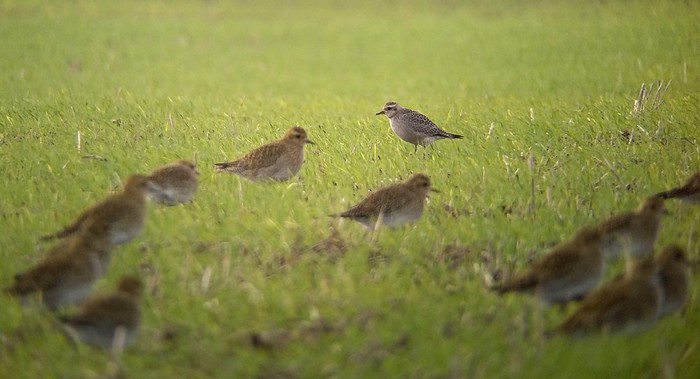
There was barely anything else on offer shorebird-wise this week - though a new juvenile American Golden Plover in private fields near Goole (East Yorkshire) on 25th was clearly of note.
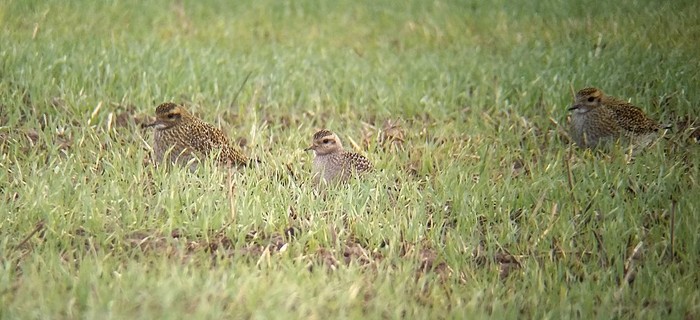
Noted again this week was the Kerry Gull-billed Tern, seen at the lock gates at Blennerville on 27th - the first report for a week. December beckons...
Making a rare sortie in to County Clare was the adult Forster’s Tern that headed along the shoreline at New Quay on 29th. This bird really puts in the miles when on its west coast winetring ground - its already zig-zagged across the sizeable Galway Bay at least twice recently; seen near Nimmo’s Pier last week and at the south end of the bay in both the middle and start of November, present at Newtonlynch and Kinvarra - both sites sitting close to the Clare border.
Earlier this year, on January 15th, came a slender incursion in to Clare, seen at Corranroo for what appears to have been the 1st record truly inside the border. Now, the ageing visitor has done it again.
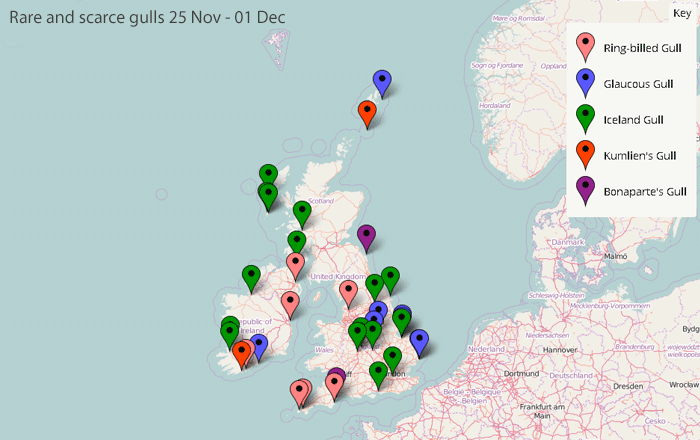
Devon’s adult winter Bonaparte’s Gull was at Dawlish Warren NNR on 25th and 28th while making another appearance on Inner Farne on 29th was the adult that reappeared theer last week.
After a double figure total of Ring-billed Gulls last week, we’ve dropped a little, from eleven to eight over the past seven days; three 2w’s were recorded - still at Tralee Bay Waetlands (Co. Kerry) on 25th, again at Preston (Lancashire), also on 25th and still on the Hayle Estuary (Cornwall) to 29th, when a 1w was seen again further west in the same county, back at Sancreed. Also on 29th, two new Irish birds were at Poolbeg (Co. Dublin) - a first-winter and an adult - and an adult was found at Timoleague (Co. Cork) while last week’s adult was still at Carrickfergus (Co. Antrim) on the same date.
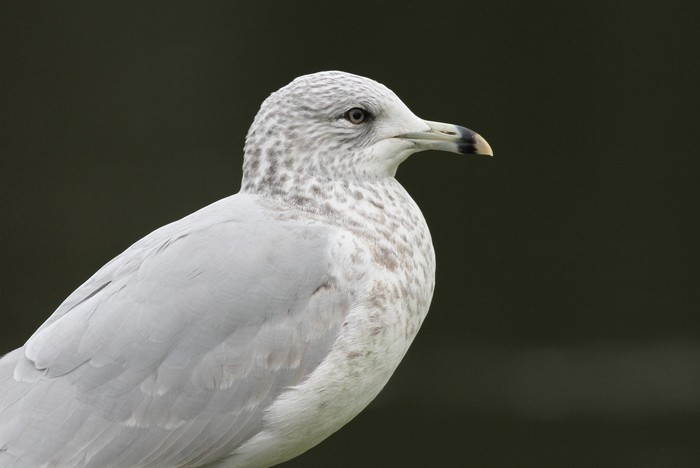
Also seeing a slump in numbers this week were both Glaucous and Iceland Gulls - both strong performers during the northerly winds of a week ago, things have returned to normal this week...
There were just eight Glaucous Gulls to report; in Suffolk, a juvenile was at Bawdsey on 25th and a second-winter was seen at Felixstowe Ferry on 28th. Another young bird was at Hoveringham Pits (Nottinghamshire) on three consecutive evenings from 26th-28th (and again on 1st) and on 27th, an adult was seen at-sea some 35 miles of Out Skerries (Shetland. The 29th brought the week’s fifth, sixth and seventh birds to Snettisham RSPB (Norfolk) and Fair Isle (Shetland) with Ireland’s only bird appearing at Ballycotton (Co. Cork). The week concluded with a juvenile at Groby Pool (Leicestershire) on 1st.
Iceland Gulls fell away from over 30 to around 20 in all this week. At least half a dozen were seen in England - juveniles were noted at Filey (North Yorkshire) on 25th, in the Midlands at Draycote Water (Warwickshire), Westwood Pools (Worcestershire) on 26th and again in the roost at Bartley Reservoir (West Midlands) on 29th, two young birds appeared at Beddington SF (London) on 27th and another was found at Hayling Island (Hampshire) on 29th. Back in the north, a brief encounter was had on Rufforth airfield (North Yorkshire) on 30th and a new juvenile was found at King’s Lynn’s Fisher Fleet on 1st.
In Scotland, a juvenile was still at Oban (Argyll & Bute) on 27th, two birds (another youngster and a third-winter) were logged on Fair Isle (Shetland) and one was at Machrihanish (Argyll & Bute) on 28th while on the Hebrides singles were on Barra on 29th (and 30th, same bird?) and North Uist on 30th. A quartet of birds were reported in Ireland (again, all juveniles); in Kerry, one was at Tralee on 25th and two were at Casheen on 28th with another at Doorly Park (Co. Sligo) on 28th.
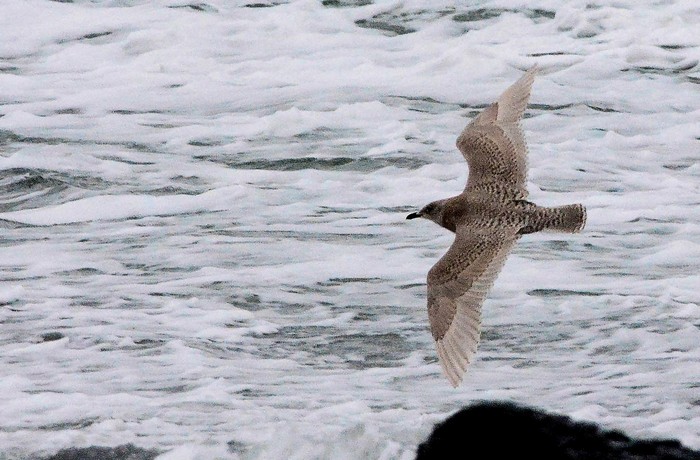
Along with the two Icelands on Fair Isle on 28th was a juvenile Kumlien’s Gull, with the second in two days, a new third-winter, appearing there on 29th. The third for the week, a second-winter was at Owenahincha (Co. Cork) on 27th.
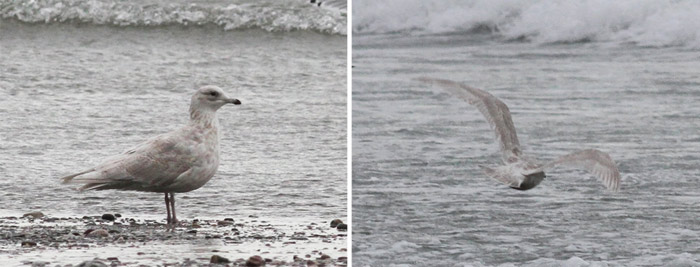
In a pretty quiet week (once you’re done with the big rares…) there were only three Rough-legged Buzzards to report.
In Hertfordshire, a juvenile was at Icknield Way, Therfield on 26th-27th (having first been noted on 24th) while last week’s new arrival in northwest Norfolk remained around the Brancaster Staithe area until 28th while in Essex, the wintering juvenile remained at Holland Haven throughout the week.
Barred Warbler isn’t a species that would normally start off this section of the review with, but this week’s northern discovery (or perhaps rediscovery) at Thorntonloch (Lothian) is certainly of note.
The bird was found feeding on fat balls near the assorted car parks between Thortonloch and Torness on 26th, and it remained in the area until 1st. It seems eminently possible that this may well be the same Barred Warbler that was found at Torness on November 1st (where it was last noted on 3rd). Winter records aren’t unheard of, but they are very thin on the ground.
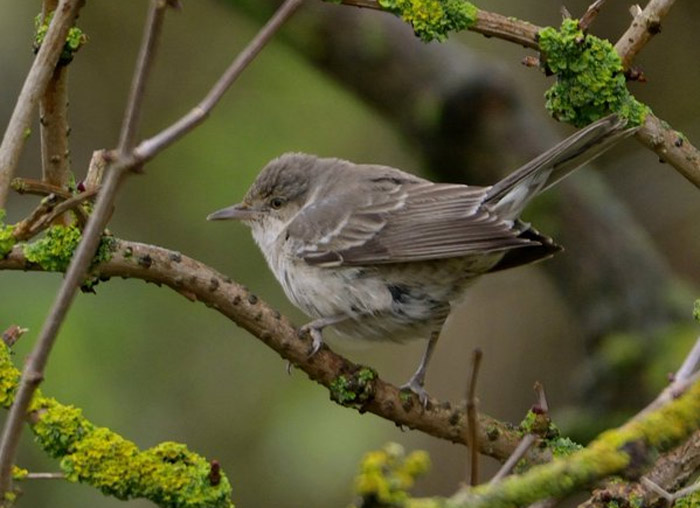
In Cornwall, a Pallas’s Warbler was reported at Sandy Cove, near Newlyn on 1st, where it briefly joined one of three southwestern Yellow-browed Warblers; a second Cornish bird was at St. Just on 27th while new in Devon was one in Plymouth on 26th-27th. The week began with a report of a Yellow-browed at Freiston Shore RSPB (Lincolnshire) on 25th and ended with a heard-only report from Shirley (West Midlands on 1st - in between them, in north Norfolk, one was seen in gardens at Salthouse on 27th.
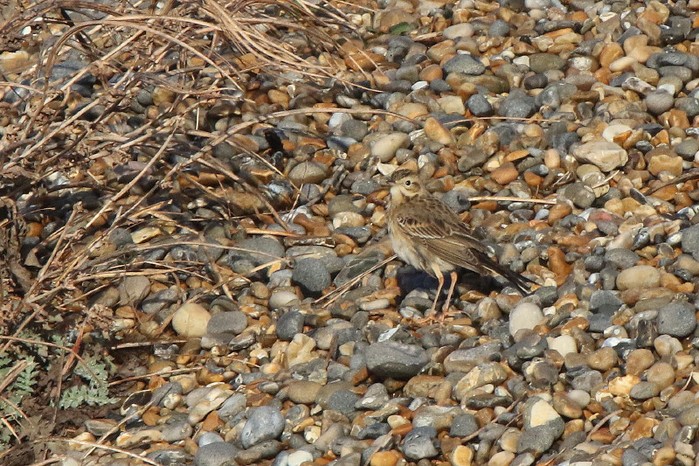
Not too far away at all, the Richard’s Pipit that headed over Weybourne last week was seen on the first day of the new review week, on 23rd, near Gramborough Hill.
On the border of the West Midlands and Staffordshire, a Hoopoe was surprise discovery at Wall Heath, near Kingswinford on 25th - a bird that proved to be particularly popular across the weekend and on to 1st.
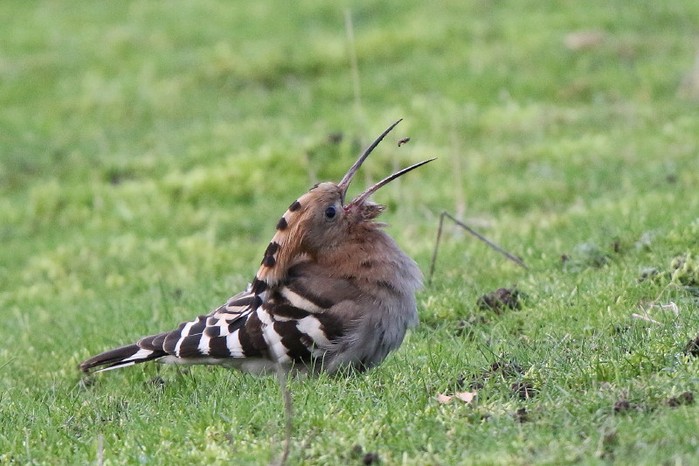
Rather more typical pinkish-hued, crested arrivals at this time of year are Waxwings and there were around 60 reported from nine counties this week.
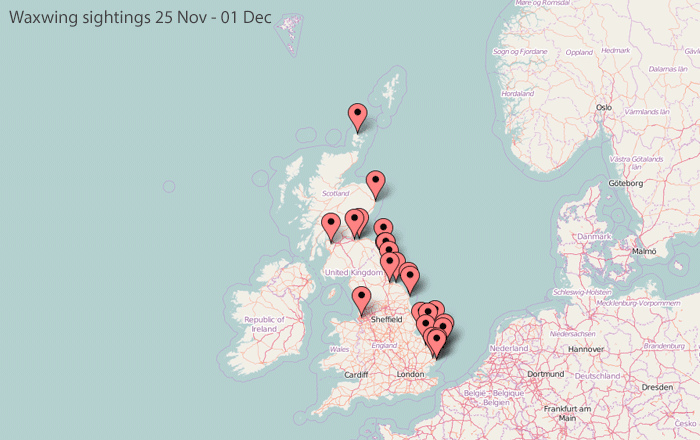
In Scotland there were 11 birds reported, including six at Kincorth (Aberdeenshire) on 28th; the northeast of England hosted a total of 23 birds including a slowly building flock of 11 at Ashington (Northumberland) and a further six were seen at Thornaby-on-Tees (Cleveland) on 25th; two groups of five Waxwings were noted in Suffolk, at Falkenham on 27th and Copdock, near Ipswich on 28th and in Norfolk, four were seen at Snettisham on 26th-27th. Two popular weekend birds were in the Brecks on the county birder at Santon Warren, which also hosted…
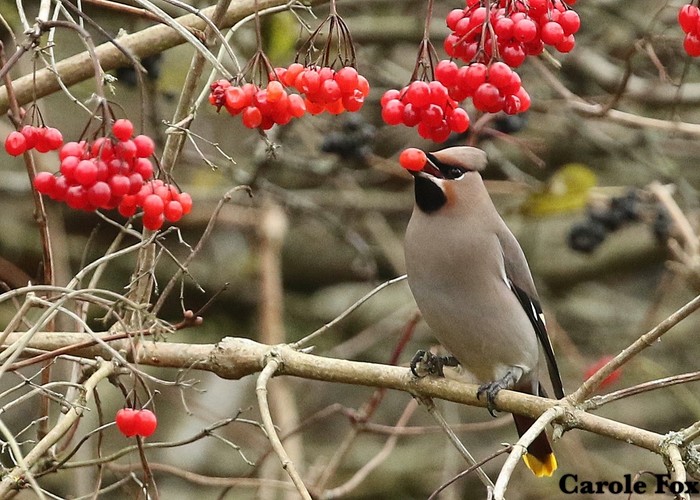
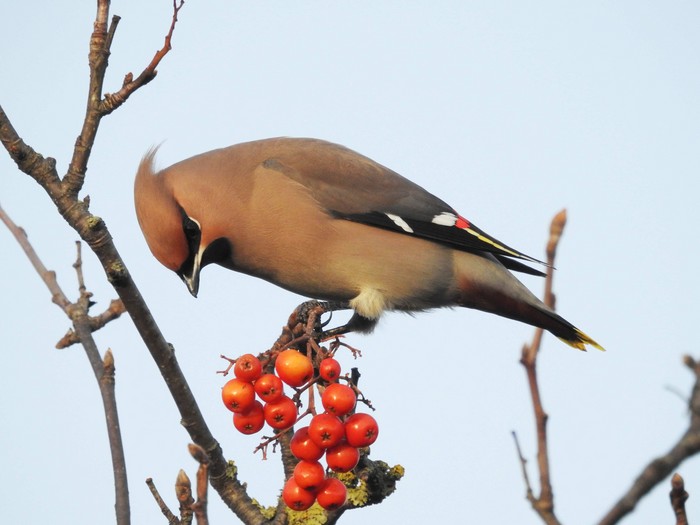
…one of 16+ Great Grey Shrikes seen through the last seven days - the Norfolk bird (seen up until 1st) was one of two in the county, the other noted briefly at Sculthorpe on 26th. Nine of the week’s birds were in southeast England; there were twos each for West Sussex (at Balcombe on 26th and Iping Common to 28th), Berkshire (around West Ilsley on 26th and still at Brimpton to 30th) and Hampshire (singles at Liss on 26th and in the New Forest, at Broomy Plain on 27th).
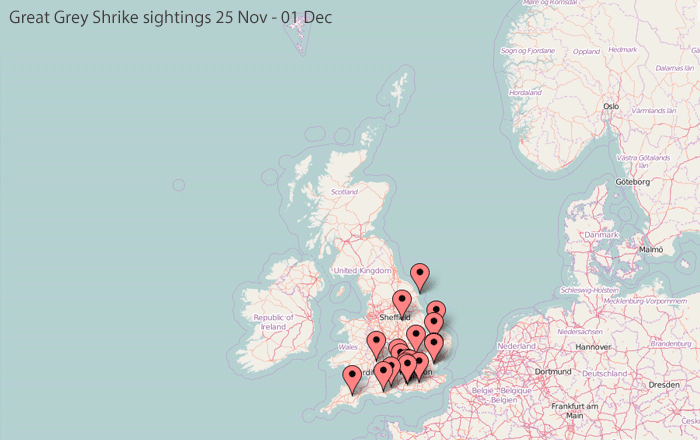
Further Great Greys in the southeast region were again at Henlow (Bedfordshire) and still at Heybridge (Essex), both to 26th and at Frensham Common (Surrey) to 28th. At the bottom of the Midlands, a singleton was present in the Forest of Dean (Gloucestershire) on 27th and in the east of the region, a new arrival was at Budby (Nottinghamshire) on 1st. In the southwest, two individuals were present, a new bird on an old wintering site was at Morden Bog (Dorset) on 26th and the same date saw news of the continuing presence of one on Dartmoor, still at Soussons plantation, also on 26th. The final Great Grey Shrike of the week was the only representative for the northeast, again at Flamborough Head (East Yorkshire) on 26th.
This week has shown just how we can never rule anything out - who’d have thought we’d get an American Bittern and Rufous Turtle Dove within a few hours of each other? - but as we enter December, anything really “big” now will certainly be deep in to “surprise” territory. And, a random Chrimbo pressie aside, December doesn’t really “do” surprises.
There are surprises from within the annals of time tho’ - that 1st Great Blue Heron appeared on Scilly on December 7th 2007. Scilly also lobbed a (largely forgotten about) December Cliff Swallow in to the mix when one spent a couple of days, early in the month, on Tresco in 1995.
Another American land bird that eventually made a name for itself was the hush-hush Baltimore Oriole at Westcliff-on-Sea (Essex) - found on December 2nd 1991 and present to the third week of March 1992, it caused a right old rumpus as invites were issued through the stay…
One day, amongst the next seven that does stick out for the strength in depth for a December date is the 3rd of the month.
Cheshire birders were taken aback by the Upland Sandpiper that appeared at Frodsham in 1983 (they’ve got rare again…); no one could quite believe their ears as news circulated about the breathtaking Broadland find of a Black-and-white Warbler at How Hill in 1985; while no one could get to Skomer for the 3-day Dusky Thrush of 1987 (I don’t think we knew about it at the time…).
There was a hit of unexpected loveliness to be had in 1989 when, post-twitch for the Whistling Swan on the Somerset Levels, a bee-line was made for Portland when a 50p investment in Birdline brought news of a Slate-coloured Junco in gardens in Weston; more recently came the Calshott Spanish Sparrow and, in 2013, the Filey Brunnich’s Guillemot - and they say they never come down the east coast…pah!
There we are then - if you fancy your chances, stake a claim to a day in the field on the 3rd; the wind looks like its westerly all the way, so chances may be limited to a heron, a duck, a shorebird or a gull.
Or maybe an American Purple Gallinule. Now that would be fun wouldn’t it…
Mark Golley
02 Dec 2015
Please note: we put a lot of time and effort into sourcing and and producing the images, videos and graphics for each roundup. Some of you (probably Apple users) may notice some photos etc. that appear to have incorrect captions. Please try refreshing the page as they are correcty captioned. If after a refresh they are still showing the incorrect captions then please email us










